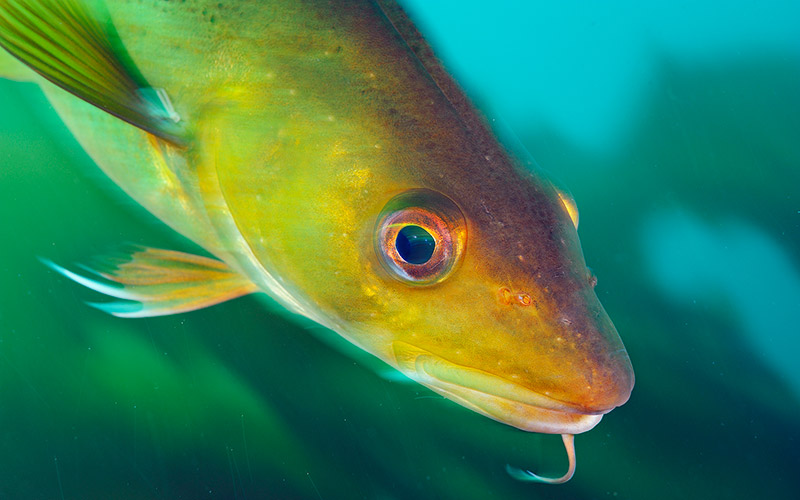
A rare red cod swimming in New England waters. Photo: Brian Skerry
Fishing has always been a way of life in New England. Thousands of years before European colonists arrived, Indigenous people fed themselves sustainably from New England’s waters. In fact, cod was so plentiful that early European colonists bragged they could almost walk across the Atlantic on their backs. This set the stage for a crisis in New England fisheries that plagues the industry and our waters to this day.
Unfortunately, dramatic improvements in fishing technology and the arrival of foreign fishing fleets off the New England coast in the 20th century led to worsening overfishing and the near collapse of many fish populations. The Magnuson-Stevens Act of 1976 ended the free-for-all. This federal law expanded the boundaries of U.S. waters, banned foreign fishing fleets, and established limits on fishing. The Act also established regional fishery management councils, including New England Fisheries Management Council, which manage fisheries in the U.S. to this day.
How are Fishery Management Decisions Made?
The National Oceanic and Atmospheric Administration (NOAA) oversees fishing policies in the U.S. The U.S. is divided into nine regions, each of which is overseen by a regional fisheries management council, including the previously mentioned New England Fisheries Management Council. These councils are composed of various stakeholders, who develop the fishery management plans, establishing plans to rebuild fish populations if they fall too low and proposing measures to ensure fishing levels remain sustainable. NOAA then approves, partially approves, or disapproves these plans.
Accurately estimating the size, location, migration patterns, and habits of marine life is an important first step for setting strong policies. Scientists use complex models to make these estimations, sometimes relying on data from the fishermen on the water. These data allow the regional councils and NOAA to create regulations that ideally ensure that a given fish population remains strong and thriving.
What Tools and Strategies Does the Fisheries Service Have?
After a lot of trial and error, NOAA now limits fishing by capping the number of fish that fishermen can land each year. This includes both fish caught for commercial purposes and “bycatch,” or fish caught unintentionally. For some species, NOAA also sets “catch quotas” that maximize the number of fish that fishermen can catch while maintaining a thriving population. These quotas typically include a buffer to account for uncertainty in scientists’ estimates.
Managing fish habitat is another crucial piece of fisheries management. Some marine life only thrives amid kelp beds, on rocky sea floors, or in freshwater rivers, particularly for key parts of a fish life cycle. Limiting or eliminating fishing activities in certain areas can create refuges that allow fish to spawn and grow in safety.
For some species like Atlantic herring, fishermen and predators like cod and tuna can find themselves in competition for a limited fish population. These “user conflicts” require carefully balancing the needs of the marine ecosystem and the people who make their livelihoods from the ocean.
These efforts are all complicated by climate change, which creates challenges for virtually every conservation effort. Heating waters have caused ripple effects throughout the marine ecosystem. Fish populations are migrating, feeding, and spawning differently. Historical data are becoming quickly outdated. Predicting the future has never been harder.
How Can We Strengthen New England’s Fisheries Management?
Fisheries management must preserve the beloved heritage of New England’s fishing industries with stronger regulations and measures to adapt to climate change.
New England’s iconic cod‘s numbers have collapsed catastrophically. New research has revealed that there are more distinct cod populations in New England than previously understood, and they’re all in trouble. The New England Fisheries Management Council must quickly adopt stronger management measures to protect cod, including putting together a formal rebuilding plan if necessary to safeguard this beloved species.



